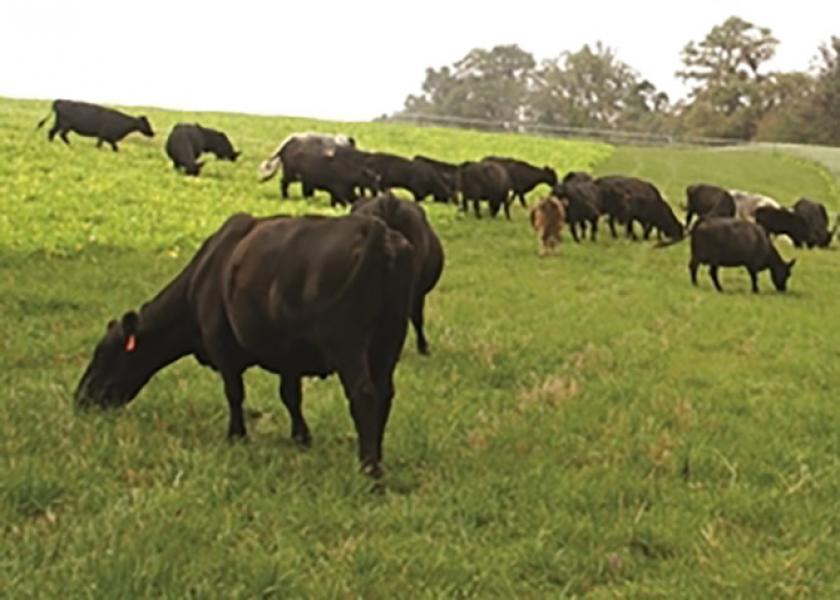In Cool Spring, Hold Cows off Pasture Until Growth Reaches at least 4 Inches

By: Duane Dailey, University of Missouri Extension
At the first sign of green grass growing in pastures, farmers will be tempted to turn in livestock for grazing.
"Hold back," says Rob Kallenbach, University of Missouri Extension forage specialist. "Wait for grass to reach a minimum 4 inches of new growth. More is better.
"After a long hard winter, I am as sick of feeding hay as anyone," Kallenbach says. "But I’ll try to hold back."
A delayed start on grazing becomes more important than usual this spring. "Pastures will be weak and thin," he says. "Give grasses a chance to gain strength."
Pastures were hurt two ways. Dry weather last fall left grasses weak going into winter. The fall of 2013 was drier than the fall of the drought year of 2012, when hurricane rains revived fall pastures.
Secondly, extreme cold killed or set back grass this year.
"You think grass doesn’t grow in winter. But it is alive and growing. Any new growth was frozen repeatedly."
Extreme variations in temperatures made winterkill worse. There would be 60 degrees one day. Three days later it would fall below zero again. "The plant would react to the springlike temperatures—and then get zapped.
"The cure for weak stands is rest and regrowth to restore depleted sugar reserves."
Grazing too early could cause need for pasture reseeding later, or the weak stands could become crowded out with weeds.
Thin stands leave open spaces for weed seedlings to emerge.
Kallenbach recommends taking a pasture walk to evaluate the growth. "Check the pastures before turning in the cows."
There is good news for those who overseeded pastures with legumes in February. "This should be a good clover year," Kallenbach says.
The same open spaces that allow weeds to grow also provide less competition for clover, lespedeza or trefoil. A thin grass stand allows sunshine and moisture to reach the legume seedling.
Kallenbach recommends broadcast seeding legumes in grass pastures "on the last snow" every year.
Legumes add protein to the grazing diet for livestock and dilute the impact of toxic Kentucky 31 fescue. Also, legumes add nitrogen to the soil.
"This year, freezing and thawing worked the seed into the soil. That’s good for the legumes."
Patience in letting early grass grow will affect grass production all season long, Kallenbach says.
"Holding livestock off to let grass grow from 3 inches up to 5 inches makes a big difference."
That can happen in a few days.
Feeding hay a little longer will help the grass.
Kallenbach conducts his grazing research with cow herds at the MU research centers at Mount Vernon, Columbia and Linneus. All are part of the College of Agriculture, Food and Natural Resources.







